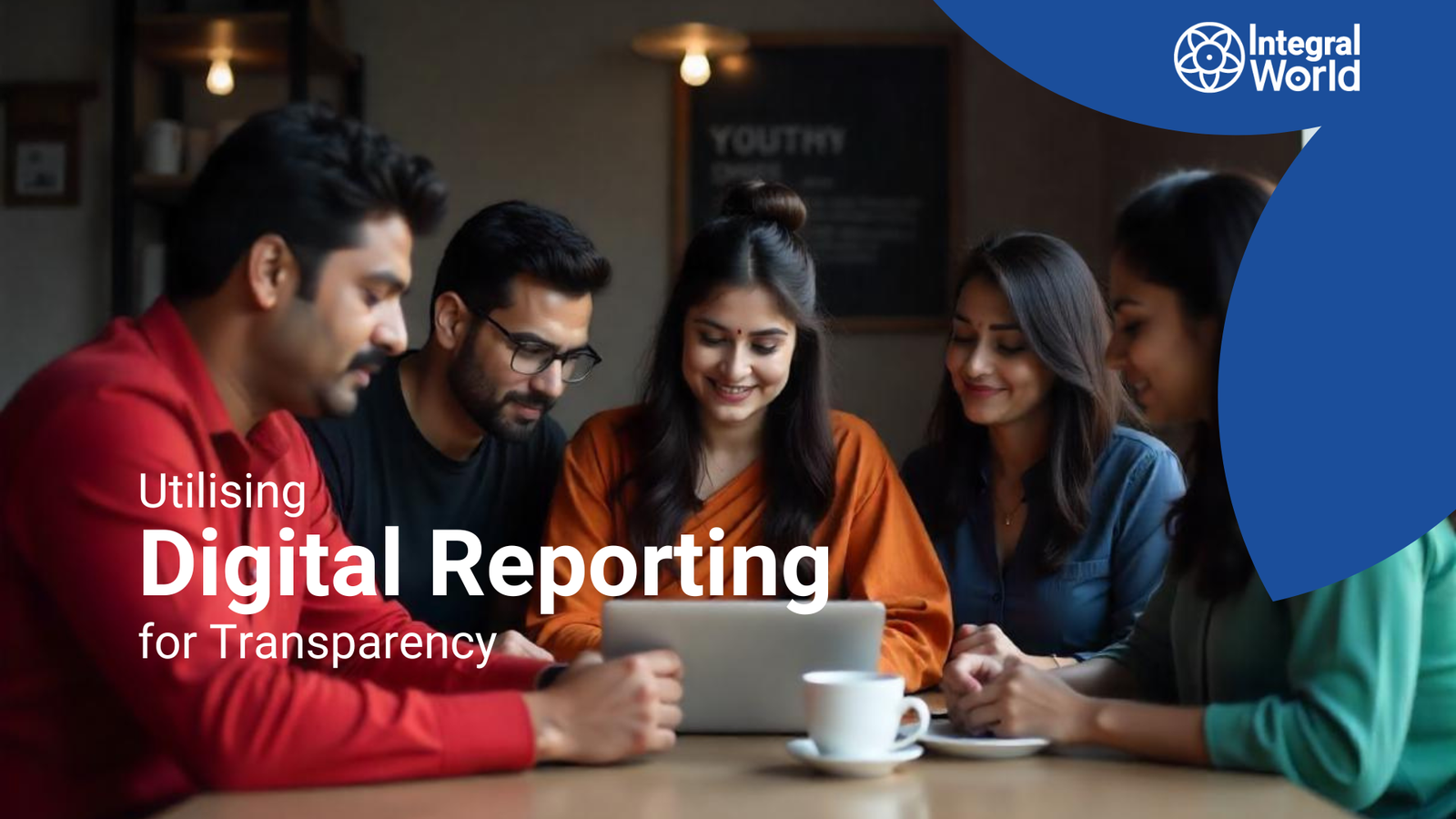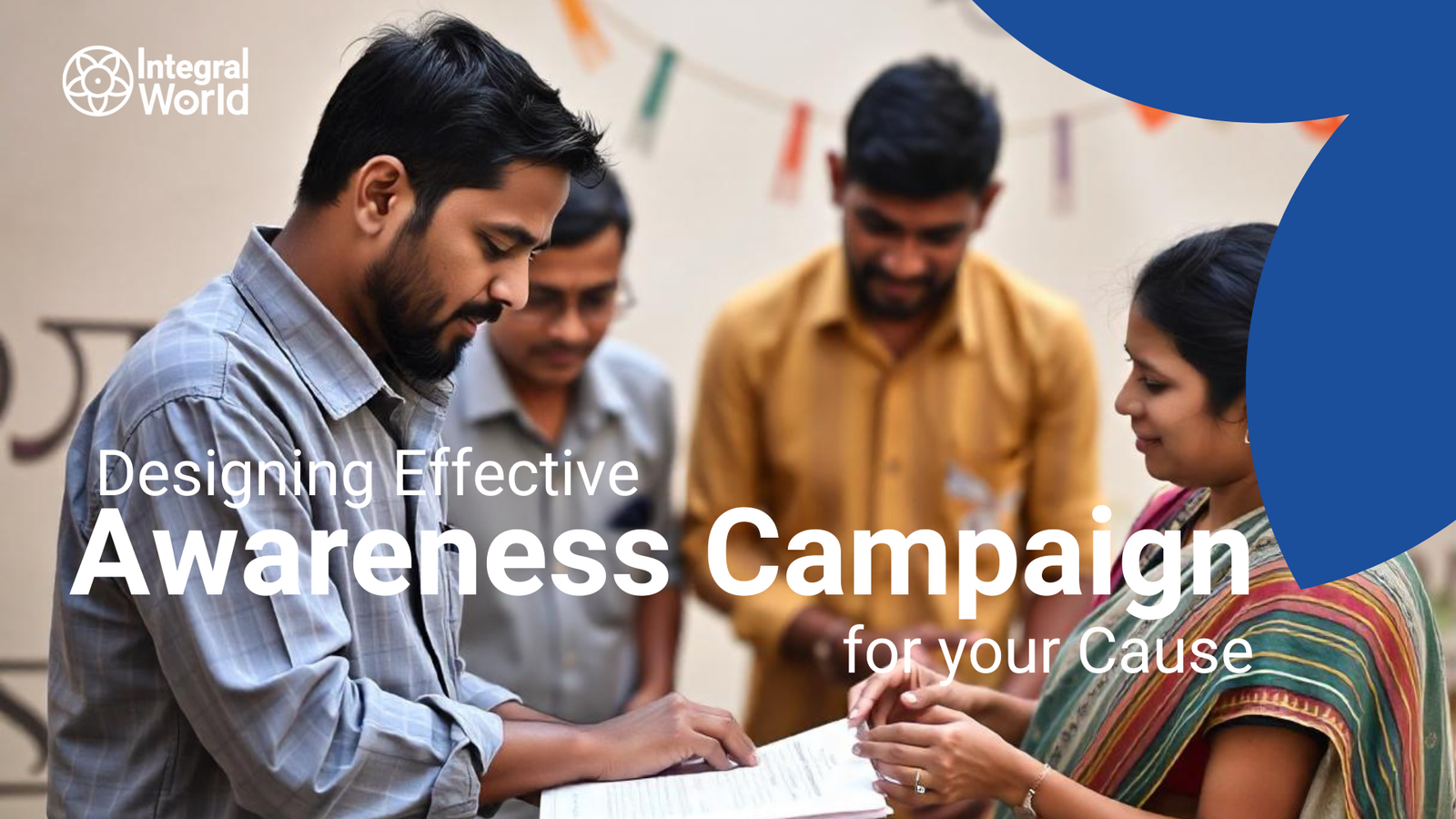Digital reporting is essential for building trust and authenticity in non-profits. Integral World explores how transparency drives engagement, highlights successful examples, and provides practical advice on fostering an authentic culture, emphasizing the key role of leadership in the process
Continue readingDesigning Effective Awareness Campaigns for Your Cause
Creating awareness about something is not just sharing information; it means provoking action, promoting engagement and becoming a catalyst for meaningful change. At Integral World, which revolves around sustainable and holistic development, effective awareness campaigns are crucial to our dedication.
This article delves into the strategies, insights and actionable tips necessary to develop impactful awareness campaigns that resonate with audiences and produce measurable results.
Can you imagine a world where every voice matters, every cause counts, and all actions result in positive changes? Designing an effective awareness campaign goes beyond being a communication strategy; it acts as a mobilizer of communities, policy influencer and social justice advocate. Therefore when we start working on designing result-oriented campaigns we will review the major elements that turn concepts into movements.
Understanding Effective Awareness Campaigns
Effective awareness campaigns built on clarity, empathy, and strategic communication. Maya Angelou once said: ‘Do the best you can until you know better. Then when you know better, do better.’ This wisdom also applies well in the field of awareness campaigns – organizational learning from insights and best practices helps organizations refine their approaches as well as boost their impact.

Key Elements of a Successful Awareness Campaigns
Objectives should be Clear and Target Audience Identified: Determine your specific goals which will dictate messages to be used as well as determining strategies that match the audience profile. Know who your audience is if you want your message to be relevant.
Have A Compelling Narrative: Create stories that emotionally resonate with people’s hearts so they act upon them. People remember stories more than statistics. According to Dr. Marshall Ganz who is a globally known community organiser such storytelling contributes greatly to mobilising communities hence making social change realised.
Multi-channel Approach: Different platforms like social media; traditional media; events and partnerships can serve diverse audiences at once. Engage specific segments of your audience through each platform differently.
Engagement And Activeness (Interactivity): Let them participate by using contests or interactive content and calls for action that give listeners tangible things to do. Commit to the cause and take ownership by actively engaging.
Measurable Metrics: Indicators such as reach, engagement rates, actions taken are some of the metrics you can use to gauge success of your campaign. When you measure impact, it helps you refine strategy and demonstrate effectiveness to stakeholders.
Insights from Scholars and Thought Leaders
“Courage starts with showing up and letting ourselves be seen,” said Dr. Brene Brown. This applies to awareness campaigns too since authenticity attracts audiences well as vulnerability does.
Case Studies and Examples
Case Study 1: Clean Ocean Campaign The Clean Ocean Campaign by Ocean Conservancy effectively raised awareness about ocean pollution through a combination of social media campaigns, beach clean-ups, and partnerships with influencers and corporations. By engaging volunteers worldwide and using powerful visuals the campaign furthered awareness creation but also led to policy shifts.
Case Study 2: #MeToo Movement The #The MeToo movement is a powerful example of how a hashtag became a global phenomenon sparking conversations among people who were held accountable while advocating for policy reforms. The significance lies in grassroots movements’ strength and social media’s role in raising public consciousness, driving societal change.
Actionable Tips for NGOs and Organisations
Research & Planning: Thoroughly research your audience as well as what you are dealing with regarding communication channels preferences; understand their reasons for acting or not acting on an issue presented.
Establish Partnerships and Collaborations: To increase the intensity of your information, bind together with people that have shown kindness to your thinking. Collaborating with others provides wider coverage and enhances credibility.
Storytelling and Visuals: Present narratives that grip the heartstrings coupled with visuals and personal tales to make a lasting connection with your audience. Capturing people’s attention requires being authentic and relatable.
Measurement and Adaptation: To adapt strategies for optimising impact, you should continuously observe how it is going in terms of campaign performance. Data-driven insights refine messages and tactics by adapting to audience feedback, ensuring effective and targeted communication strategies.
Conclusion
In conclusion, designing awareness campaigns that are effective requires creativity, empathy, and strategic thought. At Integral World, we campaign to not only raise awareness but also to inspire action and drive positive change.
Contact us today and we will tell you more about how we can help your organization design meaningful awareness programs or join our next initiative which aims at promoting sustainable development holistically.
Best Practices for Internal Communication in Development Orgs.
Effective internal communication is the unseen thread that runs through any successful organization especially those involved in development that rely upon a culture of teamwork, transparency and trust to achieve their objectives. For the Integral World, advancing authentic internal communications is essential because it works.
This article examines the best approaches to employ when undertaking internal communications using examples of organizations that thrived on being them, tips for NGOs sustaining their genuineness and role played by leadership in establishing authenticity within an organization’s culture.
In development organizations, internal communication goes beyond sharing information; it encompasses an environment where all members feel valued, listened to and are aligned with the mission of the organization. Therefore, Development requires trustful collaboration between different parties within developing countries seeking for development needs.
Success Stories: Organizations Excelling Through Authenticity
BRAC
BRAC has become highly successful through its commitment to genuine internal communications as one of the world’s largest development agencies. The Organization has focused on education, healthcare, and economic development as tools of empowering societies in more than 11 countries.
Practices
Inclusive Communication: Two-way communication is assured by BRAC in which it encourages input from employees at all levels.
Cultural Sensitivity: Moreover, Communication strategies should be tailor made by BRAC to be culturally sensitive and inclusive considering the varied backgrounds of its staff.
Leadership Engagement: Employees are often engaged in discussions with senior leaders through town hall meetings, open forums, and one-on-one interactions.

Tips for NGOs to Maintain Authenticity in Internal Communication
1. Foster a Culture of Transparency
Transparency is the basis for authentic communication; thus, development organizations must prioritize open and honest communication about goals, challenges, and achievements.
Action Steps:
Regular Updates: Provide ongoing updates on projects, financial status, and organizational changes.
Open Forums: Create avenues where workers can share feedback or ask questions without intimidation.
Financial Transparency: Detailed financial reports should be shared to build trust as well as accountability.
2. Encourage Open Dialogue
To promote open dialogue amongst employees leading to voice of opinion sharing ideas and contributing to the decision making process.
Action Steps:
Feedback Mechanisms: Regular feedback mechanisms like surveys, suggestion boxes or anonymous feedback forms should be implemented.
Inclusive Meetings: Ensure that all meetings are inclusive of all staff members allowing for diverse perspectives to be heard.
Active Listening: Train leaders and managers on active listening skills towards fostering respect and understanding within their teams.
3. Promote Storytelling
The storytelling approach gives a human face to the work undertaken by development organizations thereby helping employees connect with its mission on a personal level.
Action Steps:
Share Success Stories: Share success stories through impact reports among others frequently with employees.
Personal Narratives: Employees need encouragement so that they can share their personal experiences in the organization at large putting into consideration their journey over time.
Visual Storytelling Use visual aids such as videos and infographics to tell stories in a more engaging and relatable manner.
4. Prioritize Employee Well-being
Authentic communication entails caring about employees’ well-being, such as their mental health, work-life balance, and professional development.
Action Steps:
Mental Health Support: The company should provide resources and support for mental health and wellbeing.
Flexible Work Arrangements: Personal needs of employees should be taken care of by allowing for flexibility in their working arrangements.
Professional Development: Workers need to grow and thrive hence there is need to invest in their professional development.
5. Leverage Technology
Technology can enhance internal communication making it efficient, interactive, and accessible.
Action Steps:
Internal Communication Platforms: Use platforms like Slack, Microsoft Teams or Workplace by Facebook to facilitate real-time communication.
Virtual Town Halls: Virtual town hall meetings are conducted whenever there is a need to reach out to employees from different locations across the globe.
Digital Feedback Tools: Use digital tools for collecting as well as analyzing employee feedback within the organization.

The Role of Leadership in Fostering an Authentic Organisational Culture
1. Leading by Example
Leaders play a pivotal role in setting the tone for authentic communication through transparency modelling leading by example towards openness and integrity among other values that may inspire teams thereafter.
Practices:
Honest Communication: Leaders must talk honestly about what they have achieved so far as well as challenges so that others will emulate them accordingly.
Accessibility: Employees should be able to interact with leaders freely without any restrictions or limitations whatsoever starting from C.E.O downwards thus encouraging open door policy.
Consistent Messaging: Consistency in messaging emanating from leaders helps reinforce what organizations stand for including its core values and objectives.
2. Building Trust
Trust is the bedrock of genuine communication. Through their actions and words, leaders should work to build and foster trust.
Practices:
Follow Through: Leaders must stick to their promises; hence they have to follow through on commitments they make in order to build credibility.
Transparency in Decision-Making: Sharing information regarding why certain decisions were made will help employees understand and support the organizational changes being implemented.
Empathy and Compassion: Show empathetic behaviors as well as compassionate mindset while dealing with your subordinates by acknowledging their efforts, constraints or problems thereby creating a safe working environment for all.
3. Collaboration
It is very important to create a spirit of community and common goals. It is necessary for leaders to encourage teamwork among teams as well as departments.
Practices:
Cross-Functional Teams: Form teams that are cross-functional in nature, to work together on projects and problems.
Collaborative Tools: Tools such as social media should be provided which can be used to facilitate collaboration and knowledge sharing.
Recognition and Celebration: To strengthen the value of teamwork, one needs to acknowledge and celebrate achievements made through collaboration.
Conclusion:
Integral World knows that successful internal communication is important if we are to achieve sustainable and holistic development. We do this by creating an environment of openness thereby encouraging dialogue through storytelling, promoting employee wellness and harnessing technology. This enables organizations to establish themselves on a solid communication ground.
Development organizations, NGOs and not-for-profits are invited to partner with Integral World on their journey towards authentic internal communication. We can therefore guide organizations through best practices in enhancing their communications so as to build trust, increase credibility among partners and maximise their development objectives.
For more information about how Integral World can help you better communicate internally within your organization, follow us on LinkedIn or visit our website. Together we can create a world that is more transparent, collaborative and impactful than ever before.



